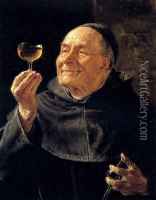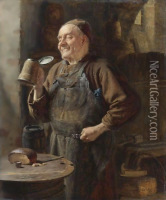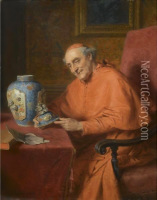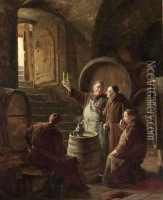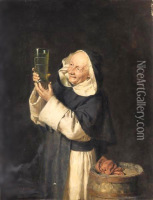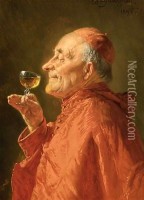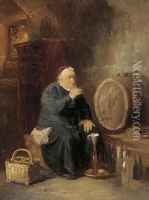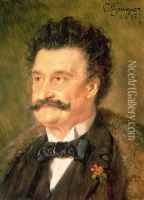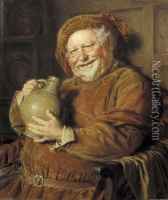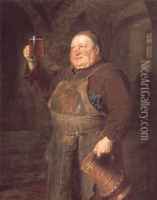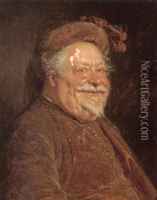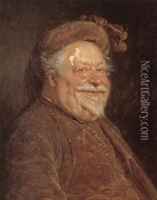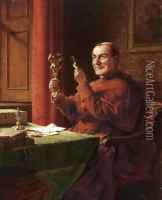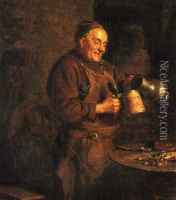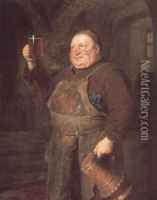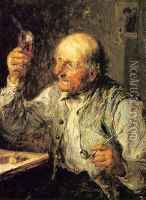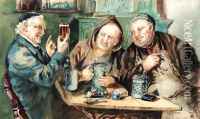Eduard Von Grutzner Paintings
Eduard Theodor Ritter von Grützner was a German painter and professor known primarily for his genre paintings of monks. Born on May 26, 1846, in Groß-Karlowitz (now Karłowice Wielkie), then in the Kingdom of Prussia, Grützner grew up in a milieu that fostered his artistic talents. He was initially apprenticed to a lithographer but his interest in painting led him to pursue a formal education in art.
Grützner studied at the Academy of Fine Arts in Munich under the tutelage of Hermann Anschütz and later under the renowned pilot painter Eduard Schleich. It was during his academic years that Grützner developed a fascination with the works of old masters, which greatly influenced his style and subject matter. He became particularly known for his humorous and detailed depictions of monks engaged in various activities, often involving wine or beer, which reflected the general public's fascination with monastic life.
His paintings displayed a remarkable talent for capturing textures and expressions, and his work became popular for its storytelling quality and the warmth of its character portrayal. Grützner was also known for his historical and portrait paintings, but it was his monk paintings that garnered the most attention and acclaim.
In 1883, Grützner was appointed as a professor at the Munich Academy, and in 1888, he was ennobled by Prince Regent Luitpold, which allowed him to add 'Ritter von' to his name. His work was exhibited internationally, and he received numerous awards, including medals at the World's Columbian Exposition in Chicago in 1893.
Despite the popularity of his work, Grützner was often criticized by some for his lack of innovation and his focus on a single theme. Nevertheless, his paintings continued to be sought after by collectors and the public, and his contributions to German genre painting were significant.
Eduard von Grützner died on April 2, 1925, in Munich. His works remain in many private collections and museums, and they continue to be studied and appreciated for their technical skill and unique blend of humor and tradition.
